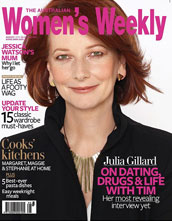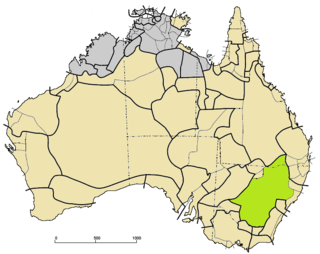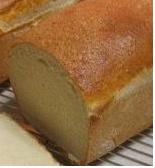
A hamburger, or simply burger, is a sandwich consisting of fillings—usually a patty of ground meat, typically beef—placed inside a sliced bun or bread roll. Hamburgers are often served with cheese, lettuce, tomato, onion, pickles, bacon, or chilis; condiments such as ketchup, mustard, mayonnaise, relish, or a "special sauce", often a variation of Thousand Island dressing; and are frequently placed on sesame seed buns. A hamburger patty topped with cheese is called a cheeseburger.

Pavlova is a meringue-based dessert. Originating in either Australia or New Zealand in the early 20th century, it was named after the Russian ballerina Anna Pavlova. Taking the form of a cake-like circular block of baked meringue, pavlova has a crisp crust and soft, light inside. The confection is usually topped with fruit and whipped cream. The name is commonly pronounced pav-LOH-və or pahv-LOH-və, and occasionally closer to the name of the dancer, as PAHV-lə-və.

A doughnut or donut is a type of food made from leavened fried dough. It is popular in many countries and is prepared in various forms as a sweet snack that can be homemade or purchased in bakeries, supermarkets, food stalls, and franchised specialty vendors. Doughnut is the traditional spelling, while donut is the simplified version; the terms are used interchangeably.

Cornmeal is a meal ground from dried corn (maize). It is a common staple food, and is ground to coarse, medium, and fine consistencies, but not as fine as wheat flour can be. In Mexico, very finely ground cornmeal is referred to as corn flour. When fine cornmeal is made from maize that has been soaked in an alkaline solution, e.g., limewater, it is called masa harina, which is used for making arepas, tamales and tortillas. Boiled cornmeal is called polenta in Italy and is also a traditional dish and bread substitute in Romania.

A hot cross bun is a spiced bun usually made with fruit, marked with a cross on the top, which has been traditionally eaten on Good Friday in the United Kingdom, Australia, New Zealand, South Africa, Canada, India, Pakistan, Malta, United States and the Commonwealth Caribbean. They are available all year round in some places, including the UK.

Sprinkles are small pieces of confectionery used as an often colourful decoration or to add texture to desserts such as brownies, cupcakes, doughnuts or ice cream. The tiny candies are produced in a variety of colors and are generally used as a topping or a decorative element. The Dictionary of American Regional English defines them as "tiny balls or rod-shaped bits of candy used as a topping for ice-cream, cakes and other."

The Australian Women's Weekly, sometimes known as simply The Weekly, is an Australian monthly women's magazine published by Are Media in Sydney and founded in 1933. For many years it was the number one magazine in Australia before being outsold by the Australian edition of Better Homes and Gardens in 2014. As of February 2019, The Weekly has overtaken Better Homes and Gardens again, coming out on top as Australia's most read magazine. The magazine invested in the 2020 film I Am Woman about Helen Reddy, singer, feminist icon and activist. Editor-in-chief Nicole Byers told Film Ink "Helen’s story of adversity and triumph is nothing short of inspirational. The Weekly has been telling stories of iconic Australian women for more than 80 years and we're delighted to be supporting the film production".

The Kitchener bun is a type of sweet pastry made and sold in South Australia since 1915. It consists of a bun sometimes baked, sometimes fried, made from a sweet yeasted dough similar to that used for making doughnuts, split and then filled with raspberry or strawberry jam and cream, most often with a dusting of sugar on the top.

A saveloy is a type of highly seasoned sausage, usually bright red, normally boiled and available in fish and chip shops around England. It is not well known in other parts of the United Kingdom. It is sometimes also available fried in batter.

Wiradjuri is a Pama–Nyungan language of the Wiradhuric subgroup. It is the traditional language of the Wiradjuri people of Australia. A regressive revival is underway, with the language being taught in schools. Wiraiari and Jeithi may have been dialects.

The Bath bun is a sweet roll made from a milk-based yeast dough with crushed sugar sprinkled on top after baking. Variations in ingredients include enclosing a lump of sugar in the bun or adding candied fruit peel, currants, raisins or sultanas.

Different areas of the world have local variations on the hot dog, in the type of meat used, the condiments added, and its means of preparation.

A sausage sandwich is a sandwich containing cooked sausage. It may consist of an oblong bread roll such as a baguette or ciabatta roll, and sliced or whole links of sausage, such as hot or sweet Italian sausage, Polish sausage, German sausage, North African merguez, andouille or chorizo. Popular toppings include mustard, brown sauce, ketchup, BBQ sauce, steak sauce, peppers, onions, sauerkraut, chili, and salsa.

Manchet, manchette or michette, is a wheaten, yeast-leavened bread of very good quality, or a small flat circular loaf. It was a bread that was small enough to be held in the hand.

A Sally Lunn is a large bun or teacake, a type of batter bread, made with a yeast dough including cream and eggs, similar to the sweet brioche breads of France. Sometimes served warm and sliced, with butter, it was first recorded in 1780 in the spa town of Bath in southwest England. As a tea cake it is popular in Canada, England and New Zealand.
Lunn is a surname, and may refer to:
















